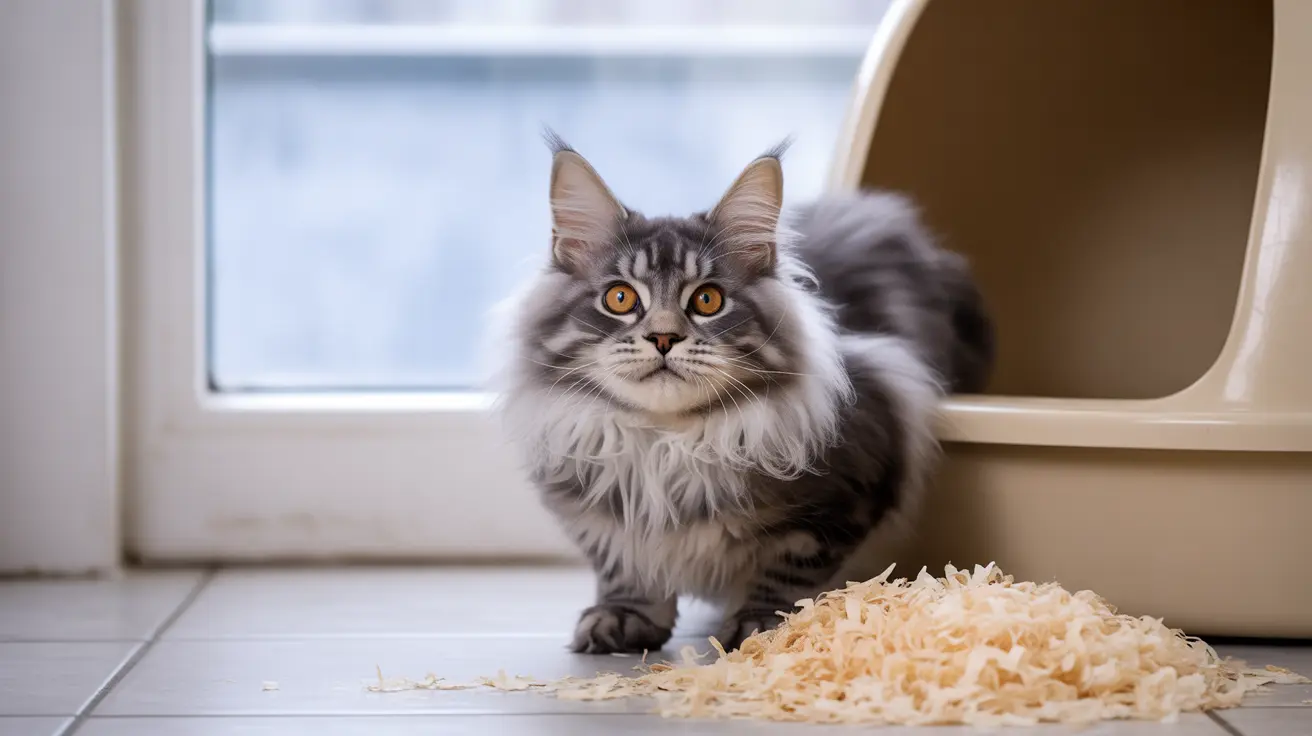Cat Not Urinating in Litter Box Causes: Emergency Warning Signs Every Owner Must Know
When your feline companion visits the litter box repeatedly without producing urine, this alarming behavior signals a potentially life-threatening medical emergency. Understanding the underlying causes of why cats cannot urinate and recognizing the critical warning signs can mean the difference between a full recovery and fatal complications. This urgent situation, commonly referred to by veterinarians as a "blocked cat," requires immediate professional intervention to prevent kidney failure, dangerous electrolyte imbalances, and even death.
Cat owners must recognize that a cat's inability to urinate represents one of the most serious veterinary emergencies they may encounter. Unlike other health issues that can wait for regular veterinary hours, urinary blockages demand instant attention because waste products rapidly accumulate in the body when urine cannot exit naturally. This comprehensive guide will help you identify the warning signs, understand the underlying causes, and take the appropriate emergency steps to protect your cat's life.
Understanding Urinary Blockages in Cats
Urinary blockages or obstructions occur when something prevents urine from passing through the urethra from the bladder to the outside of the body. This condition is significantly more common in male cats due to their anatomically longer and narrower urethras, though female cats can also experience these dangerous blockages. When urine cannot exit the body normally, toxic waste products begin accumulating, leading to kidney failure and potentially fatal electrolyte imbalances that can cause cardiac arrest.
Veterinarians encounter blocked cats frequently in animal hospitals and emergency clinics because the condition can progress rapidly from uncomfortable to life-threatening within just days. The accumulation of waste products affects vital organ function, particularly the heart and kidneys, making immediate veterinary intervention absolutely critical for survival.
Common Causes of Cat Not Urinating in Litter Box
Mucus Plugs and Urethral Obstructions
The primary cause of urinary blockages in male cats involves mucus plugs consisting of mucus, urinary crystals, and inflammatory cells that become lodged in the narrow urethra. These plugs form when inflammation in the urinary tract produces excess mucus that combines with microscopic crystals and cellular debris, creating a cork-like obstruction that completely blocks urine flow.
Urethral Stones and Mineral Deposits
Urethral stones represent another significant cause of urinary blockages in cats. These mineral and crystal formations typically originate in the bladder and travel down the urinary tract, where they can become lodged in the urethra. The stones vary in size and composition, with some being small enough to cause partial blockages while others completely obstruct urine flow.
Feline Lower Urinary Tract Disease (FLUTD)
Feline Lower Urinary Tract Disease encompasses various conditions affecting the bladder and urethra. FLUTD often manifests as feline idiopathic cystitis, a condition causing bladder inflammation that's frequently related to stress and environmental factors. This inflammation can contribute to the formation of mucus plugs and increase the risk of complete urinary blockages.
Other Medical Causes
Additional causes of urinary blockages include spinal diseases that affect the nerves controlling bladder function, cancer within the urethra that creates physical obstructions, and prostate disease in male cats that can compress the urethra. While less common than mucus plugs and stones, these conditions require specialized diagnostic approaches and treatment plans.
Critical Warning Signs Requiring Emergency Care
Recognizing the signs of urinary blockage can save your cat's life. The most obvious indicator is repeated visits to the litter box with straining motions but no urine production. However, cats experiencing urinary blockages typically display multiple concerning symptoms that escalate as the condition progresses.
Physical signs include loud vocalizations expressing pain and distress, frequent licking of the genital region, visible straining in the litter box, blood in any urine that may be produced, restlessness and inability to find comfortable positions, panting even when not overheated, increasing lethargy as toxins build up, and vomiting due to waste product accumulation.
Behavioral changes often accompany the physical symptoms. Cats may become increasingly anxious, hide in unusual places, show aggression when touched near the abdomen, or display excessive grooming behaviors focused on the genital area. As the condition progresses, affected cats typically become more lethargic and may stop eating entirely.
Life-Threatening Complications of Urinary Blockages
Understanding the serious complications that develop when cats cannot urinate emphasizes why immediate veterinary care is non-negotiable. The accumulation of waste products in the bloodstream affects multiple organ systems, creating a cascade of potentially fatal problems that worsen with each passing hour.
Kidney failure develops as toxins build up in the bloodstream, overwhelming the kidneys' ability to filter waste products effectively. Dangerous electrolyte imbalances, particularly elevated potassium levels, can cause irregular heart rhythms and cardiac arrest. In severe cases, the blocked bladder may rupture, causing urine to leak into the abdominal cavity and requiring emergency surgery.
The timeline for these complications is frighteningly short. Without treatment, cats with complete urinary blockages can develop kidney failure and die within just one to two days, making every hour critical for successful treatment outcomes.
Emergency Veterinary Diagnosis and Treatment
When you bring your cat to an emergency veterinary clinic for suspected urinary blockage, the veterinary team will immediately begin a systematic approach to diagnosis and treatment. The physical examination typically reveals a distended, firm bladder that feels enlarged when gently palpated through the abdominal wall.
Diagnostic procedures include comprehensive blood tests to assess kidney function and detect dangerous electrolyte imbalances, urinalysis to identify infections, crystals, or other abnormalities, and imaging studies such as X-rays or ultrasound to visualize bladder enlargement, stones, or masses that might be causing the obstruction.
Treatment requires immediate hospitalization and begins with stabilizing your cat's condition. Intravenous fluids help rehydrate the patient and restore proper electrolyte balance, while muscle relaxants may be administered to ease tension in the urethral sphincter. Continuous ECG monitoring watches for heart arrhythmias that can result from potassium imbalances.
The primary treatment involves urinary catheterization performed under sedation or anesthesia. This procedure allows veterinarians to dislodge the obstruction and empty the bladder, providing immediate relief. In extremely critical cases, cystocentesis may be necessary to drain the bladder directly through the abdominal wall. Severe or recurrent cases might require surgical intervention, including procedures to remove stones or create a permanent wider urethral opening called perineal urethrostomy.
Post-Treatment Care and Medications
Following successful treatment of urinary blockage, cats typically require several days of hospitalization for monitoring and supportive care. Discharge medications commonly include pain relief medications such as buprenorphine to manage discomfort, antibiotics if bacterial infections are present, and specialized veterinary prescription diets designed to dissolve crystals and prevent stone formation.
The transition period after treatment requires careful monitoring at home, with owners watching for signs of recurring blockage or complications. Follow-up veterinary appointments ensure proper healing and allow for adjustments to the treatment plan as needed.
Prevention Strategies for Urinary Health
Preventing urinary blockages requires a comprehensive approach addressing both physical and environmental factors that contribute to urinary tract problems. Stress management plays a crucial role, as stress-related inflammation significantly increases the risk of developing mucus plugs and other obstructions.
Environmental enrichment helps reduce stress through the provision of appropriate toys, climbing trees, hiding places, and pheromone diffusers that create a calming atmosphere. Maintaining proper litter box hygiene and providing an adequate number of boxes (one more than the number of cats in the household) ensures cats have clean, comfortable elimination options.
Increasing water intake represents one of the most effective prevention strategies. Feeding wet food instead of dry kibble significantly increases moisture consumption, while providing fresh water fountains can encourage drinking. Some cats prefer moving water and will drink more from fountains than static bowls.
Regular veterinary checkups allow for early detection of urinary tract problems before they progress to complete blockages. Routine urinalysis can identify crystals, infections, or inflammatory changes that might predispose cats to future blockages.
When to Seek Emergency Care
Any cat showing signs of straining without producing urine requires immediate emergency veterinary care, regardless of the time of day or night. Additional emergency indicators include visible pain when touching the abdomen, complete lethargy or collapse, vomiting in combination with urinary symptoms, and any behavioral changes suggesting severe discomfort.
Early signs that warrant same-day or next-day veterinary evaluation include increased frequency of litter box visits, small amounts of blood in urine, excessive grooming of the genital area, and behavioral changes such as hiding or decreased appetite. Addressing these early warning signs can prevent progression to complete urinary blockage.
The survival rate for cats with urinary blockages approaches 90% when they receive timely veterinary care, but delays in treatment dramatically increase the risk of complications and death. When in doubt, it's always better to seek veterinary evaluation immediately rather than wait to see if symptoms improve on their own.
Frequently Asked Questions
How quickly can a urinary blockage become fatal in cats?
A complete urinary blockage can become life-threatening within 24-48 hours as waste products accumulate in the bloodstream, causing kidney failure and dangerous electrolyte imbalances that can lead to cardiac arrest.
Are male cats really more prone to urinary blockages than females?
Yes, male cats are significantly more susceptible to urinary blockages due to their longer and narrower urethras, which make it easier for plugs and stones to become lodged. However, female cats can also experience blockages, though less frequently.
What should I do if my cat is straining in the litter box but I'm not sure if they're constipated or have a urinary problem?
Contact your veterinarian immediately for guidance. Both conditions can be serious, but urinary blockages are life-threatening emergencies. Your veterinarian can help differentiate between the two conditions and determine the appropriate urgency of care.
Can stress really cause urinary blockages in cats?
Yes, stress is a significant contributing factor to feline lower urinary tract disease and can lead to bladder inflammation that promotes the formation of mucus plugs. Environmental stressors should be minimized as part of prevention strategies.
How much does emergency treatment for a blocked cat typically cost?
Emergency treatment costs vary widely depending on the severity of the blockage and required interventions, but owners should expect significant veterinary expenses for hospitalization, catheterization, medications, and monitoring. Pet insurance or emergency funds are highly recommended for cat owners.
Will my cat need special food after recovering from a urinary blockage?
Many cats benefit from veterinary prescription diets specifically formulated to prevent crystal formation and maintain urinary tract health. Your veterinarian will recommend the most appropriate diet based on your cat's specific condition and risk factors.
How can I tell the difference between a partial and complete urinary blockage?
Cats with partial blockages may still produce small amounts of urine, often with visible straining and possible blood. Complete blockages result in no urine production despite repeated attempts. Both situations require immediate veterinary attention, as partial blockages can quickly become complete.
Conclusion
Understanding the causes and warning signs of urinary blockages in cats empowers owners to take immediate action when their feline companions show concerning symptoms. The key takeaway is that any cat visiting the litter box without producing urine represents a medical emergency requiring instant veterinary intervention, not a problem that can wait for regular veterinary hours.
Prevention through proper hydration, stress management, environmental enrichment, and regular veterinary care offers the best protection against these life-threatening conditions. However, when prevention fails and emergency signs appear, the difference between life and death often depends on how quickly owners recognize the severity of the situation and seek professional help. Remember that with prompt veterinary care, the vast majority of cats with urinary blockages can make full recoveries and return to normal, healthy lives.






